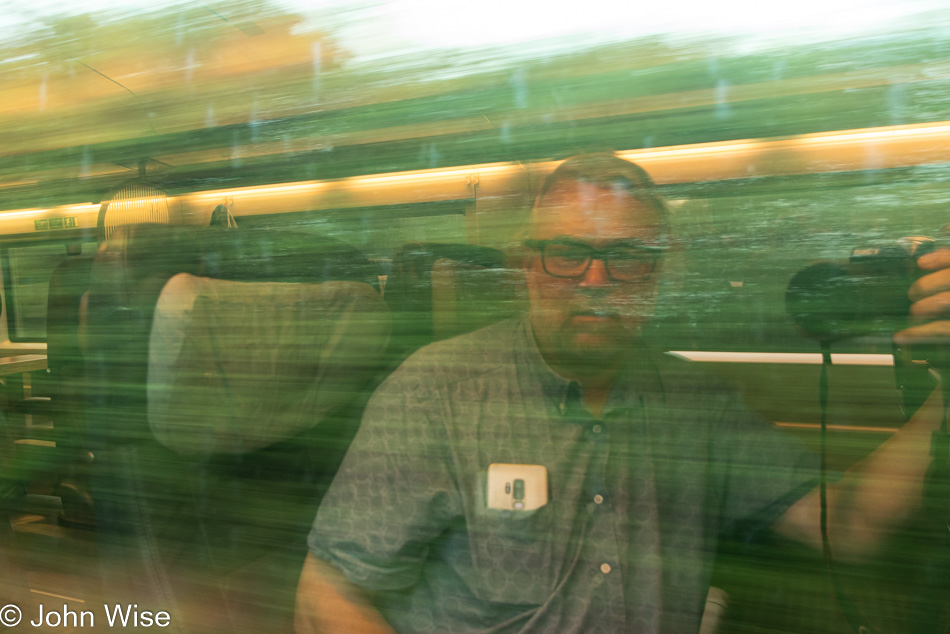
Up at 5:30 to catch a train at 6:56 to Heidelberg, and still, I was nearly late. Why Germany, are the trains less frequent on weekends? I know the answer it’s because Germans are moving slowly, and before anything else, they’ll have a late breakfast. If I lived here, that would be seared into my head, but I reach the weekend, and it might as well be Monday, and I’d think for retirees, it would be much the same. I’m on my train, in my seat, and ready to go with minutes to spare.
The ICE to Mannheim, where I’ll switch trains to Heidelberg Hauptbahnhof, arrived down south much faster than I thought it would. Sure, I knew how many minutes it would take, but time, in my perception, operates at a different level. Ten minutes after arriving at my first stop, I was on another train and should have connected with a third, but decided that I could use the steps. Plus, it was a 20-minute wait for the next train, and Google was telling me it would be only a 28-minute walk to Boris’s.

It was only yesterday that I decided I’d alter my plans and visit this old friend I’d not seen in 27 years because he gave me a heads-up that he’d be in the hospital from the 8th until the 23rd. I had known he’d be out of town for part of my visit, but I didn’t know why today, I learned that he was heading to Mannheim for surgery that was going to remove his cancerous bladder. I had to see him as soon as possible.
I was hoping to finish writing yesterday’s blog entry on the way down, but I ended up working on it later this day as with so many photos, I was going to need to keep on squawking about what that stuff was, because in less than two years I’ll be 60, and I’d imagine that I’ll need all the help I can get to remember such things in my old age.

I walked down Main Street in Heidelberg, imagining which German restaurant I’d eat lunch at, and occasionally, I felt that I could remember the look of things as I strolled along. I kept looking for the castle that I knew was somewhere on my right, but it turned out that it was further on than I could remember. Thinking I’d walk back mostly along the Neckar River, I didn’t bother taking a left for a short walk over there, but oops, I didn’t expect I’d get out of Heidelberg so late that I’d take the Old City train stop to save the half an hour walking back.
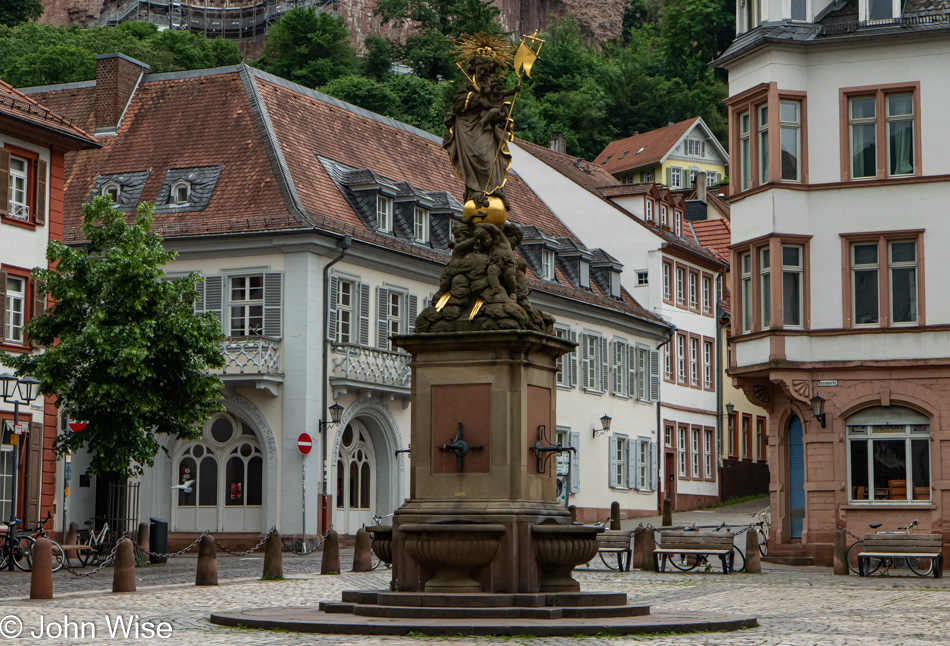
Heidelberg is in the German state of Baden-Württemberg just south of Hessen, so food is definitely on my mind, especially because a couple of years ago, I finally tried cooking from the Thuringia region and I’m now interested in trying the local cuisines from all 16 states found in Germany. Besides my culinary curiosity, I’m also equally intrigued about who Boris has become over the intervening quarter century.
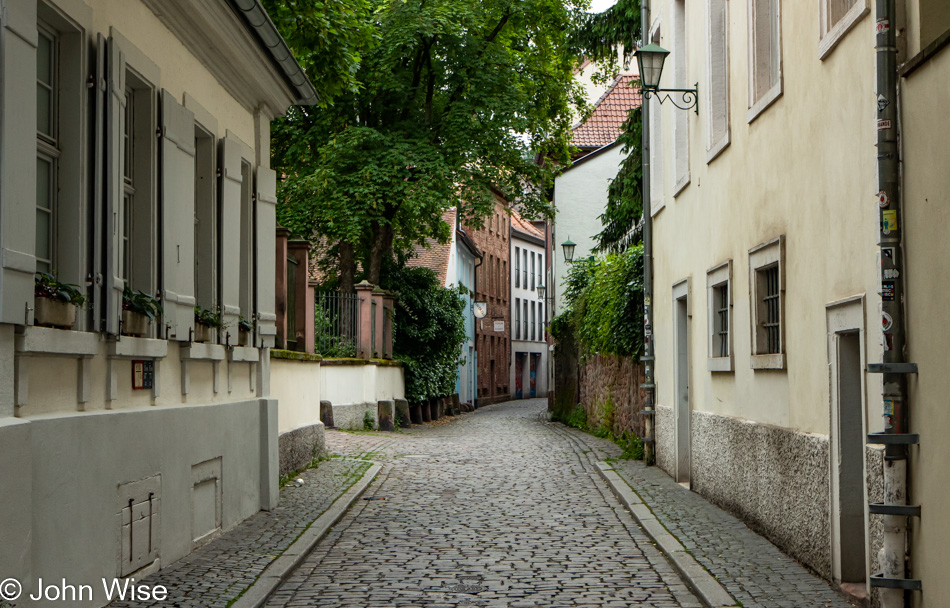
Arriving at Boris’s front door, I was all smiles as I was astonished that this was the exact same place I’d last visited him. It feels so rare that anyone should live at an address for more than 30 years that I’m left a bit speechless. In front of a table loaded with food (Boris had made us breakfast), it took us forever to sit down and finally eat. While social media has kept us loosely connected, we’ve not exchanged a lot there, so we had some serious ground to cover, and of course, that would have to be politics and manipulation/management of information for the masses.
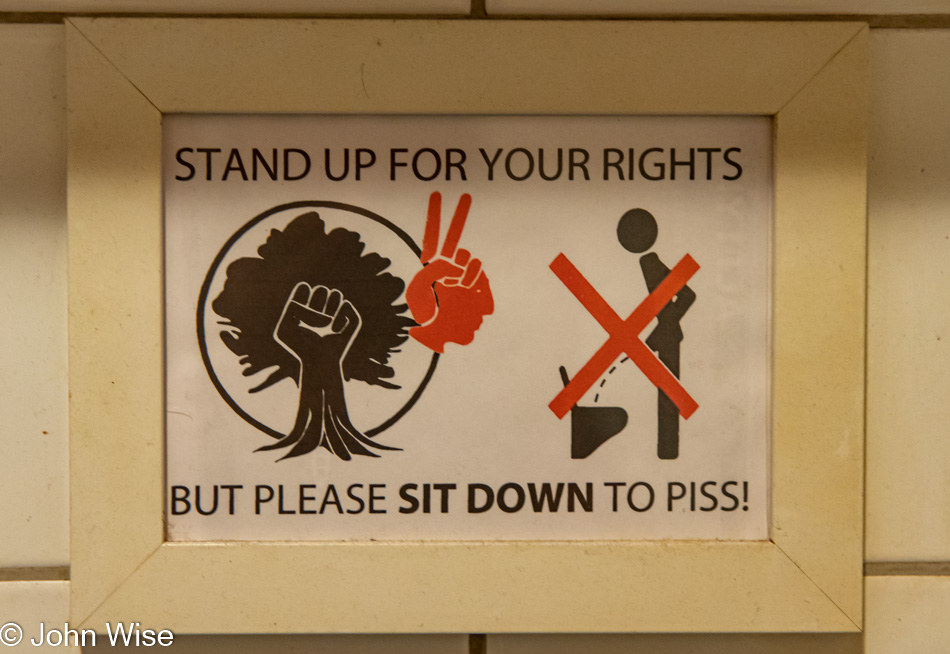
Some things never change, such as this sign over Boris’s toilet, though he informs me it is, in fact, a new one. All the same, I remember something quite similar from my visits years before. It always struck me as peculiar this idea of men sitting down to pee, but then again, I’m not sticking around to clean the toilet or wash the floor, so I suppose I need to respect these wishes.
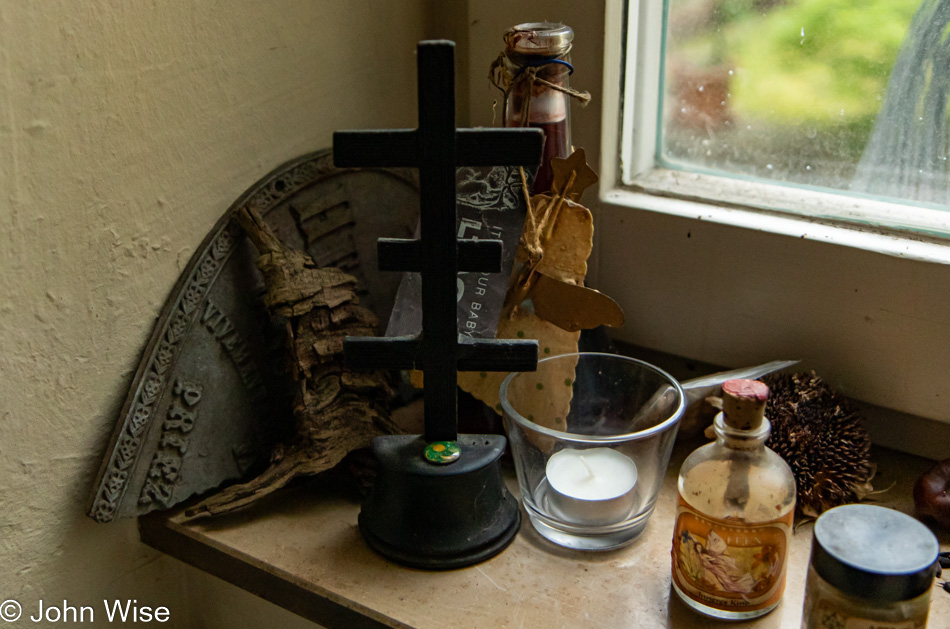
This apartment contains a series of time capsules that document the period from 1976 to 1999. I think the shift in the collection of artifacts must have begun with the arrival of the internet when much of what was to be referenced was now in digital format. Similar to Torsten Kuehne is the sense of the space serving a purpose as a home beyond what I see in the US. These are places to find oneself and share with visitors a part of your character that is removed from pure consumption of perfection, these abodes are magical dwellings where living takes place, not just existence.

On that note, Boris and I went out for a walk, but first a drive up the mountain on the other side of the Neckar River. We are visiting Heiligenberg.
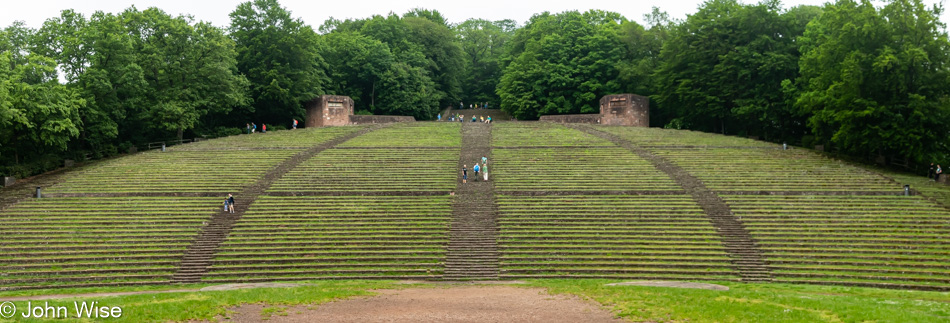
High up on the mountain is the Thingstätte, built during the Third Reich for the Nazis as part of the Thingspiel movement. Hitler never ended up speaking here, which I’d imagine was a good thing, as I think it would have been blown off the mountain if he had.
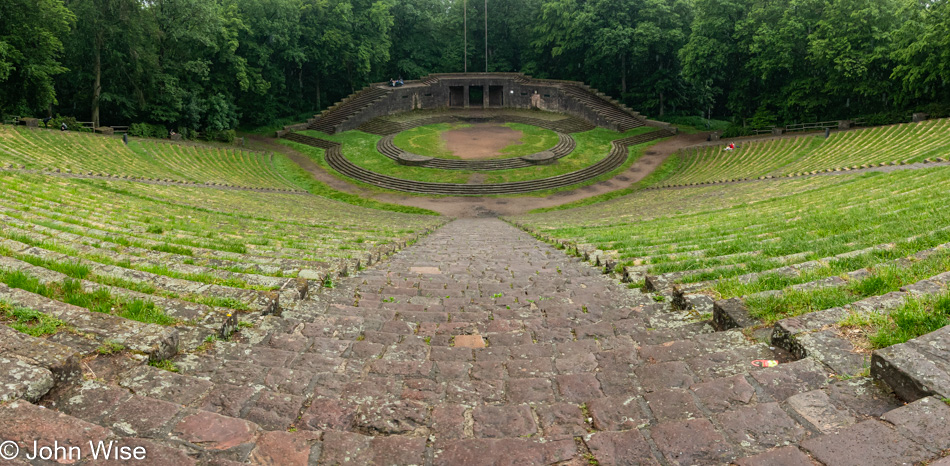
Until recently, it was used as a party place for Walpurgis Night. Saint Walpurgis had a feast day held in her honor back in the 8th century that coincides with May Day. To nearly 20,000 bonfire-worshipping revelers, it seemed this was an ideal location to revive the feast day, and with no small amount of drugs and peaceful action, this celebration happened for years without incident until the local authorities decided to shut it down. I like Boris’s explanation of what passed, “The authorities wanted mayhem and violence to give cause to shut down the yearly event as so many people assembling peacefully might give them ideas that personal freedom was something worth cherishing.”
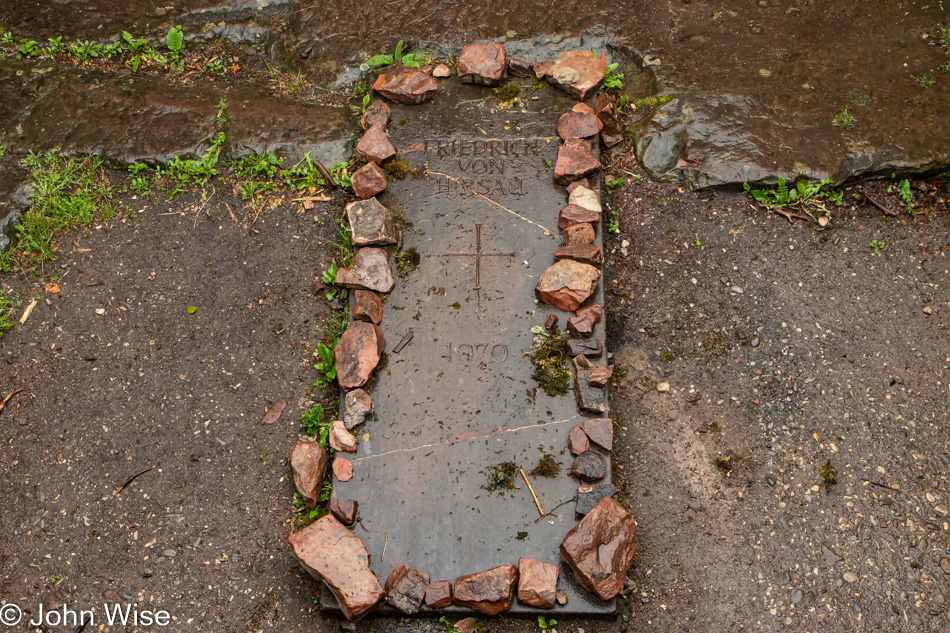
Friedrich von Hirsau, according to this slab, died in 1070, but the internet, which is never wrong, says his death was in 1071.

The Michaels Cloister lays in ruins these days, but back about 1,100 years ago, in 890, this monastery was built to ward off the pagan energy of the dragon spirit as prior to Christianity moving in, the Celts were sitting up here watching the earth from high above and deep below. This is according to Boris, but it sounds plausible to me, so I’m going with it.
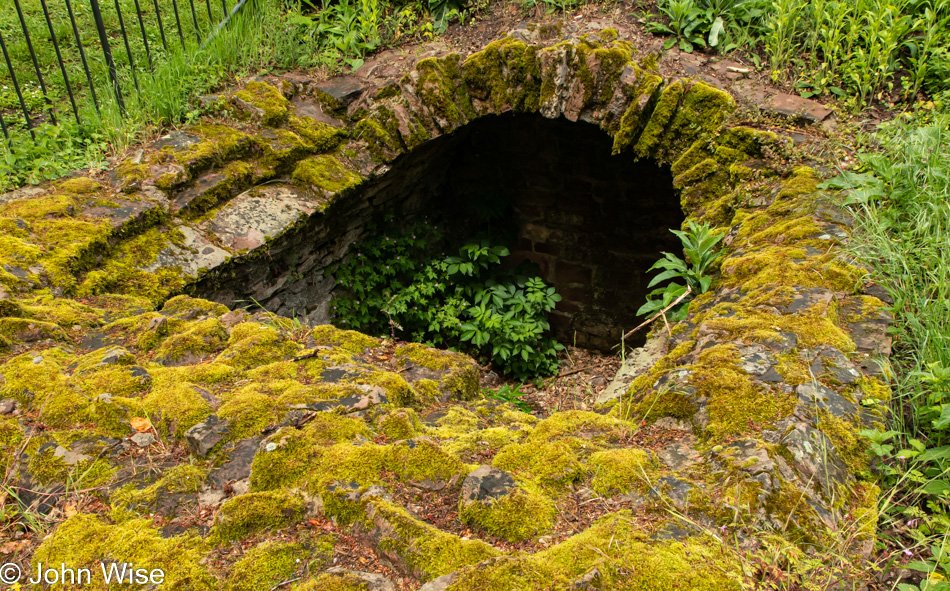
The site of the cloister is a beautiful one that seriously kicks at the imagination to fill in the blanks. The buildings fell into ruin over 500 years ago, but enough remains to enchant visitors, such as this overgrown moss-and-lichen-covered cistern.
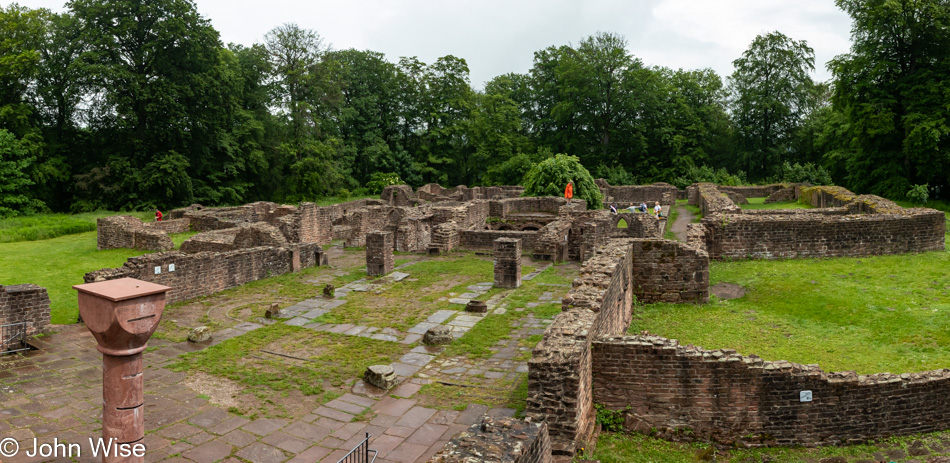
The longer I’m in Germany and the more I’ve visited over the past years, the more I’d like to know about what life was like, from about 800 to 1,400. It goes without saying I’d like to go further back but the amount of time required to begin understanding any period takes a serious investment in time.
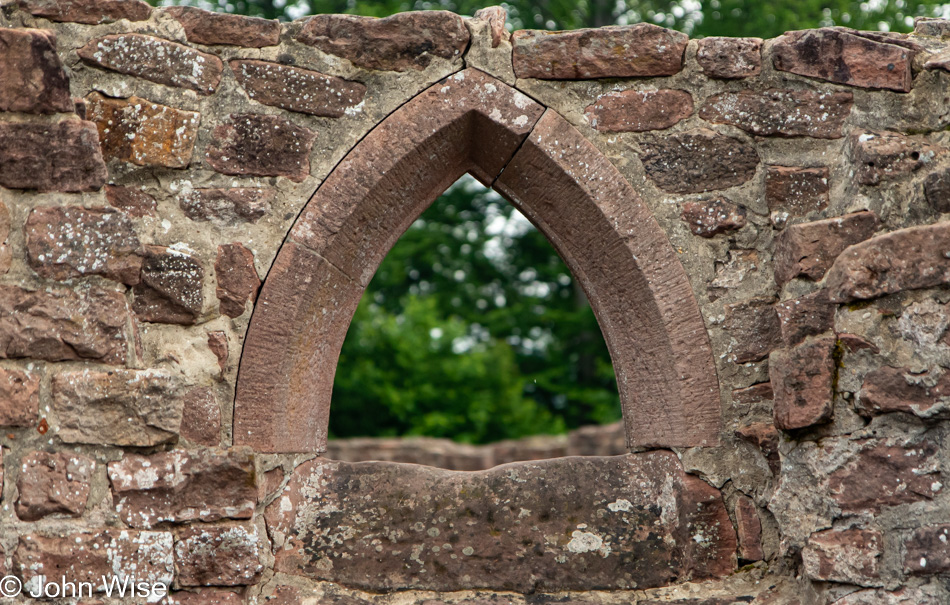
While Boris has been here many a time and has even played a key role during many of the Walpurgis Nights, this is my first time here with not much of the day available to learn more.

Ten’s of thousands have by now walked through this archway, some before modernity and many who came out of curiosity as they sought out a sense of the past that I often find myself searching for in churches and cathedrals.
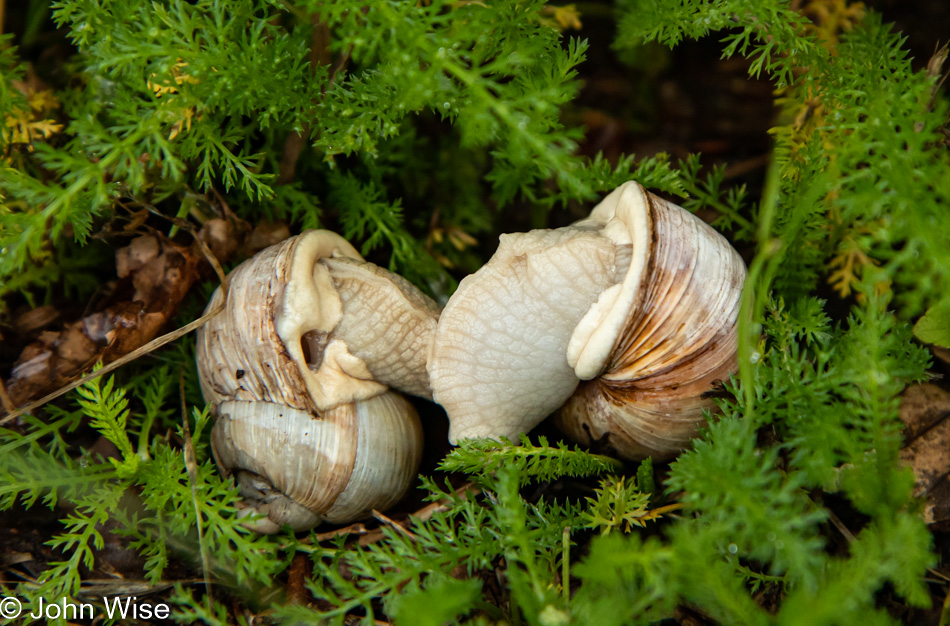
I don’t know if I’ve ever witnessed snail sex; maybe this is the essence of Celtic practices atop the Holy Mountain.
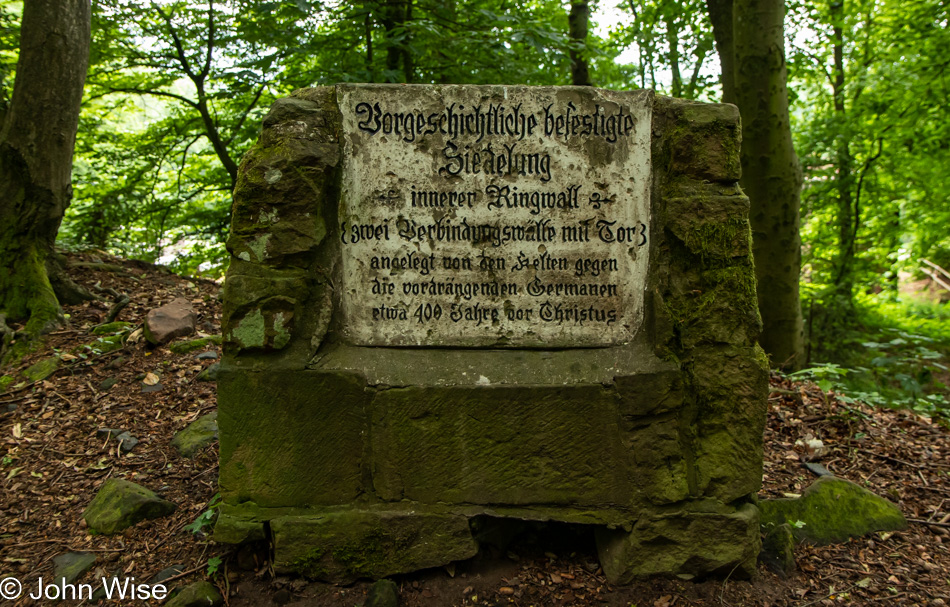
Apparently, if my rudimentary translation skills are functional at all, there is an ancient wall here that has grown over but is still detectable. It was erected 400 years before Christ by Celts to hold back Germanic tribes. What a different time when villages would battle tribes instead of nations attacking other countries. It was this level of warfare that necessitated walled cities such as Frankfurt so many years ago.
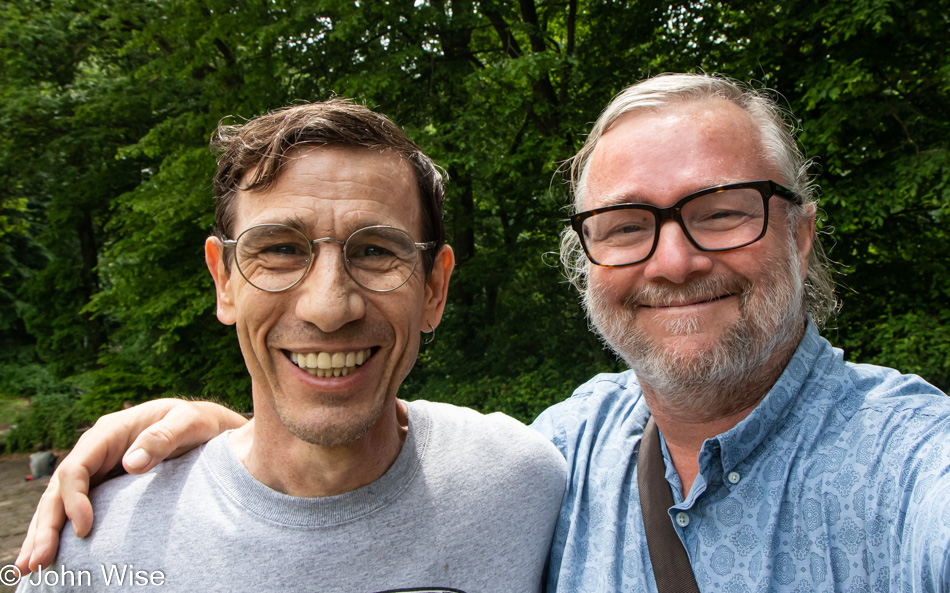
Not my favorite photo of me I’ve ever taken, but Boris’s smile was priceless so I had to swallow a bit of pride and go with this one. I probably look more or less like this all the time, but as we are all apt to do, I see things out of place that bother me. I know, who cares? If you should care to understand why Boris has played such an important role in my life, you simply need to look at the theme I list at the top of my blog that spells it out but you will have to decipher the puzzle.
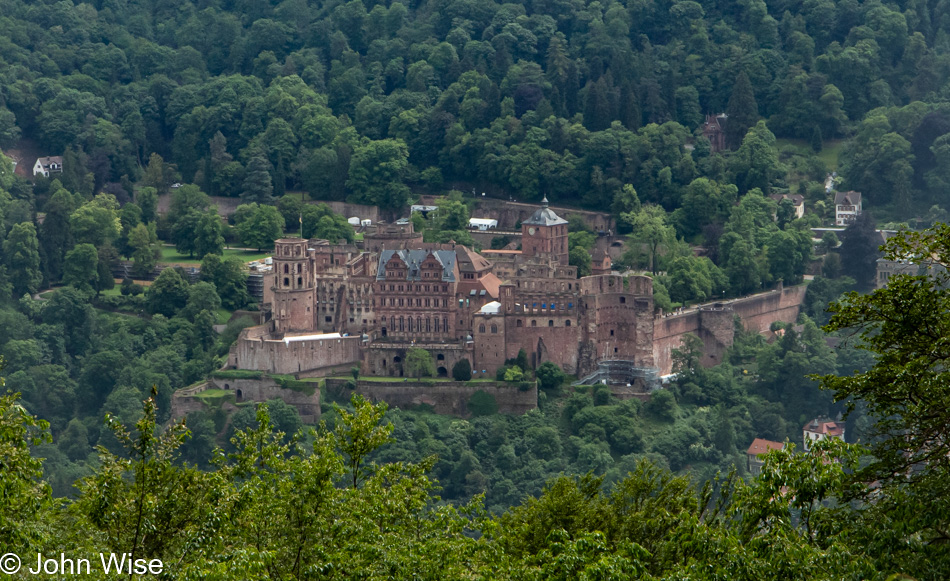
A castle in one form or another has stood here since at least 1214, but more than one was destroyed before another took its place or it was rebuilt. While the castle may look amazing in appearance from the opposite mountain, it is actually in ruin. General Tilly, during the Thirty Years War, took Heidelberg and, a few days later, the castle. I mention this because Caroline and I read this tremendous book about that war, and General Tilly featured prominently. However, while the castle was damaged and only narrowly escaped total destruction during the Thirty Years War, French soldiers dynamited it in 1693 in the course of the War of Grand Alliance (yet another war to read about), and it has been a ruin ever since. Victor Hugo visited in 1840 and fell in love with the city, so much so that he wrote a book titled, “Heidelberg: You would have to live here!” I would have ordered the book as I write this, but I cannot find it in English! Come on, this is the same author who penned Les Misérables…

This deep, as in 180 feet deep “Heathen Hole” is called Heidenloch. Nobody really knows its real purpose, but some have speculated it was a cistern or a well; Boris and I are in agreement that this seems silly as our intuition suggests it was a place from which to watch the evening stars, to note their location in a small, consistent spot so as to be able to interpret the movements of celestial bodies.

Back in Heidelberg, Boris decides to get the first COVID test he’s ever had in order for him to join me for a bite to eat. While he waited to get the test and the 15 minutes before the results were done, I walked over to a bridge to have a look over the Neckar River.

Maybe not as broad and elegant as the massively famous bridge in Prague, this is still a wonderful place to visit that, for the first time during all of my trips down here, is quite empty. Who says there’s not an upside to pandemics?

This is the Heidelberg Castle, not where we were going to have a late lunch, but the place we wanted to eat at closed during mid-day. How, in a city seen by so many tourists, could a restaurant offering regional cooking close for 2 or 3 hours in the middle of the day? Well, Boris knew of another small place he thought might meet our needs, and he was right. For another 90 minutes, we talked about the beauty of life and our precious time here on Earth.
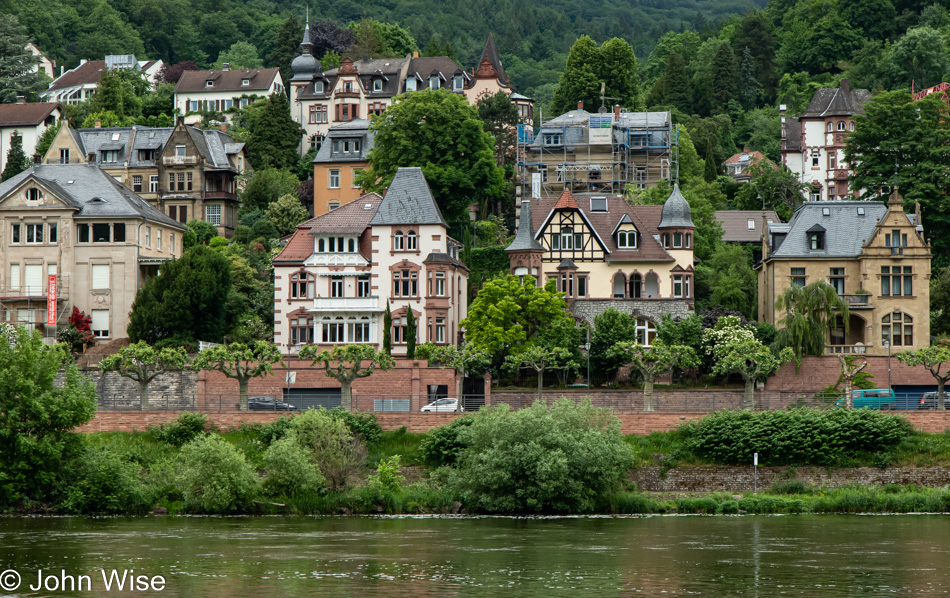
Having talked about as much as two people who’ve not seen each other in so many decades could talk, combined with my knowledge that by late afternoon, Boris found himself exhausted, it was time for us to part ways. Boris walked me to the Old City Train Station I was supposed to arrive at earlier in the day before I’d opted to walk to his place.

On Tuesday, Boris Hiesserer, a.k.a. Pyromania Arts, will enter the hospital where he’ll spend 15 days, as I said above. I wish him all the best and an effective and speedy recovery. Cancer always changes people; I just hope he can escape with a smile, just as I’m doing as I leave Heidelberg.

We are likely doing something close to the speed of light as we careened into a universe of smeared green and yellow; that’s how fast we were going.

My 1st class seating arrangement on the InterCity Express (ICE) back to Frankfurt, the entire car was mine alone.

While I love the incredible ride on these fast trains, I also love watching them speed by at 185 miles per hour.
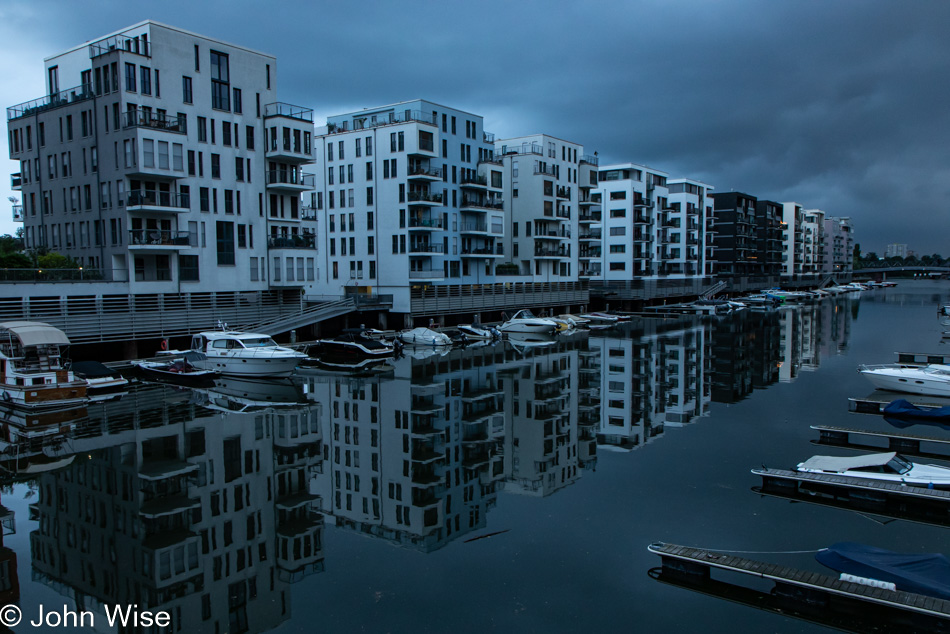
Back in the city, I walked over to Olaf’s and buzzed his door to see if he’d like to join me for a coffee; he was up for it. Over to the small Imbiss across the street we went. He opted for a Pellegrino with blood orange and I for a coffee to help me keep going. As for the pizza we shared, I don’t think it was all that helpful for wakefulness. Parting company, we agreed that the high chance of rain should push us to delay the barbecue we had planned for Sunday night.
A Walpurgisnacht fest sounds amazing. And I love that smeared yellow and green photo you took from the train. I might make that a painting one day.
Hello Ed…thanks for the terrific compliment. So nice of you to drop in.